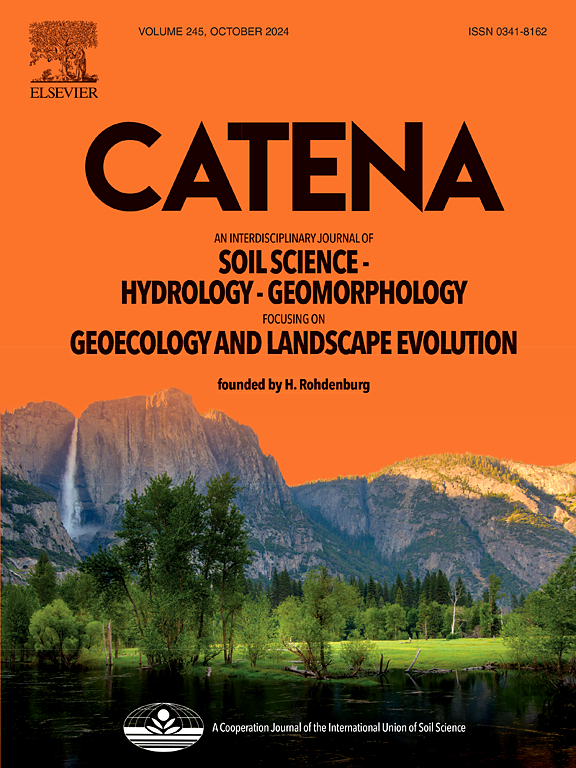Migration of dissolved organic carbon in the hydrological processes and driving factors on the Loess Plateau
Ge, Libo , Zhan, Zixin , Mei, Xuemei , Xie, Jiawei , Li, He
2025-06-30 null null 254(卷), null(期), (null页)
Dissolved organic carbon (DOC) plays a key role in the forest carbon cycle. However, the interplay between rainfall and biotic factors in regulating the vertical and horizontal transport of DOC under long-term ecological restoration remains unclear. We selected four vegetation restoration types (P. tabulaeformis, P. orientalis, R. pseudoacacia, and mixed forest of P. orientalis and R. pseudoacacia) and one nested watershed (including six sub-watersheds) on the Loess Plateau as the focus of this research. We monitored the DOC concentrations in rainfall (BP), throughfall (TF), stemflow (SF), litter leachate (LL), and surface runoff (SR) during 12 rainfall events and quantified the input and output fluxes of DOC. In the rainy season of a dry year, the net fluxes of DOC into the soil were higher for P. tabulaeformis and mixed forests than for other vegetation types, and the values were 56.63 +/- 15.46 kg ha-1 season-1 and 53.01 +/- 9.11 kg ha-1 season-1, respectively. In contrast, the net DOC flux into the soil was relatively low for P. orientalis and R. pseudoacacia. The results showed that at the vertical interface, rainfall factors (rainfall amount and duration) and biotic factors (vegetation type, leaf area index, canopy density and litter decomposition layer thickness) had significant effects on the DOC migration of TF, SF and LL, and a combination of these factors explained 74 %, 87 % and 71 % of the total variance in TF, SF and LL, respectively. At the horizontal interface, the DOC concentration in runoff plots initially decreases and then increases as rainfall intensity augments, whereas in sub-watersheds, the DOC concentration exhibits an opposite trend, initially rising and subsequently decreasing. In addition, vegetation coverage was an important factor affecting the DOC migration of surface runoff. In the runoff plot, the lowest SR-output DOC flux was that of the mixed forest. Among the sub-watersheds, the lowest SR-output DOC flux occurred in the mixed forest watershed. This study is expected to provide a reference for further understanding the mechanism of DOC migration and transformation and evaluating the carbon sink effect in long-term vegetation restoration areas.
相关推荐
- Remote sensing monitoring of irrigated area in the non-growth season and of water consumption analysis in a large-scale irrigation district [2025-06-30]
- Study on the Spatiotemporal Evolution and Driving Factors of Water Resource Carrying Capacity in Typical Arid Regions [2025-06-30]
- Could the Sloping Land Conversion Program Promote Farmers' Income in Rocky Desertification Areas?-Evidence from China [2025-06-30]
- The Role of Forestry-Based Policies in Alleviating Relative Poverty in the Rocky Desertification Area in Southwest China [2025-06-30]
- Effect of afforestation on soil water dynamics and water uptake under different rainfall types on the Loess hillslope [2025-06-30]



